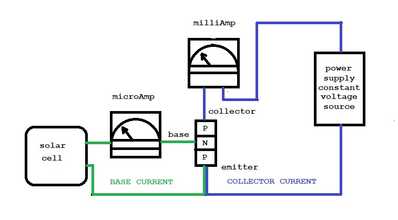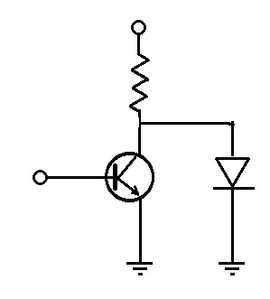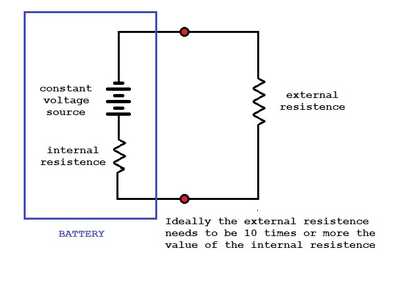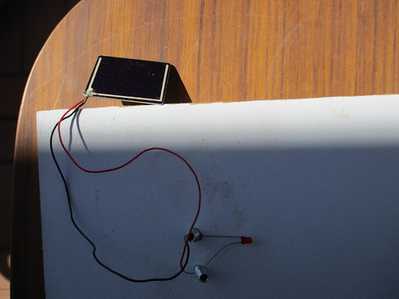Greetings!
I'm taking a bunch of mini breadboards and testing various components to gain a better understanding of how they work. My latest experiment was testing a PN2222 using the following components to turn on/off an LED:
- Small solar panel I took off a WalMart garden solar light (2V at full sunlight)
- PN2222
- 5V power supply
- 220ohm resistor
- yellow LED
Shining a bright flashlight on the panel I could make the LED turn on, then off when I turned off the flashlight.
But now I want to do the opposite using the same components but with a different transistor. I.E. if the light is shining turn off the LED, but if no light, allow the LED to turn on.
Anyone know of a transistor I could use?
@tinkerman
I'm curious, if you already have a 2V solar power source, why do you need a 5V supply, transistor and resistor to light the LED ?
Anything seems possible when you don't know what you're talking about.
Think of a transistor as having a variable resistance between the collector and the emitter. This resistance will adjust itself so the collector current is some multiple of the base current.
So any resistor in the collector path and the resistance between the collector and emitter will act as a voltage divider with the output at the transistor's collector. So put a resistor in the collector path of the appropriate value to limit the LED current and connect the LED between the collector terminal and the ground. When the transistor is fully on (min resistance) most the current will go through the transistor and the LED will turn off. When the transistor is fully off (Max resistance) most the current will go through the LED. The transistor acts as an inverter.
If you can get hold of a uAmp meter and a mAmp use the uAmp to read the base current and the mAmp meter to read the collector current. You can move your hand over the solar cell to visually see the current changes. The amplification is the result of a small base current controlling a much larger collector current.
When the transistor is fully on or fully off it is acting like a switch.
To enlarge image right mouse click over image and select open in new window.
@will Just playing around with ideas, I could have used the solar cell to power the LED but I already had the breadboard setup from a previous "experiment".
"Thusly does the tinkerman tinketh" 😀
@robotbuilder Phew! Lots for me to understand in your response, but I am glad you supplied the diagram!
I will set it up as the example provided and test each leg.
Thank you!
"Thusly does the tinkerman tinketh" 😀
So I was wrong! The solar cells used in garden lights must be better than the old experimental solar cells I played with many many years ago! They must be able to deliver the required current. I didn't read the first post clearly enough.
While reading up about solar cells I also learned that they will emit infrared light when a voltage is applied to them.




